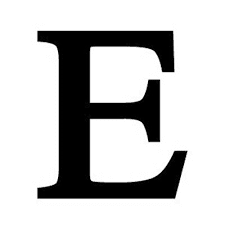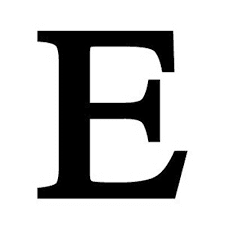JEFF BEZOS Is the founder and C.E.O of amazon.com (the largest online retailer) & Washington post. He is a very successful vibrant business whose doings have led him to hold the number one spot of the list of richest people around the world. He is worth a whopping US$121.8 billion, he could as well be known as the modern era wealthiest person.
Bezos had an early love of computers and studied computer science and
electrical engineering at Princeton University. After graduation he worked on
Wall Street, and in 1990 he became the youngest senior vice president at the
investment firm D.E. Shaw. Four years later, he quit his lucrative job to
open Amazon.com, a virtual bookstore that became one of the internet's
biggest success stories. In 2013, Bezos purchased The Washington
Post in a $250 million deal. His successful business ventures have
made him one of the richest people in the world. He further diversified
his business interests when he founded aerospace company Blue
Origin in 2000, Blue Origin started test flights to space
in 2015 and plans for commercial suborbital human spaceflight beginning
in 2018.
Early Life Stroy.
Jeff Bezos was born on January 12, 1964, in Albuquerque, New Mexico, to
a teenage mother, Jacklyn Gise Jorgensen, and his biological father, Ted
Jorgensen. The Jorgensens were married less than a year, and when Bezos
was 4 years old his mother re-married, to Cuban immigrant Mike Bezos.
Bezos's maternal grandfather was Lawrence Preston Gise, a regional
director of the U.S. Atomic Energy Commission (AEC) in Albuquerque.
Before joining the AEC, Gise had worked for the Defense Advanced Research
Projects Agency (DARPA), the research and development arm of
the Department of Defense that was created in 1958 as the first
response by the US government to the Russian launching of Sputnik I, the
first artificial Earth satellite in 1957. Intended to be the counterbalance
to military thinking in research and development, DARPA was formed, according
to its official mission statement, to ensure that the US maintains a lead in
applying technology for military capabilities and to prevent other
technological surprises from her adversaries.
Bezos' mother Jacklyn (born c. 1946) was seventeen years old and still
in high school at the time of his birth. Her marriage to Ted Jorgensen lasted a
little over a year. In April 1968 (when Jeff was 4), she married her second
husband, Miguel "Mike" Bezos, a Cuban immigrant who
arrived alone in the United States when he was fifteen years old. Mike Bezos
had worked his way through the University of New Mexico. He married
Jacklyn and adopted 4-year-old Jeff Jorgensen, whose surname was then changed
to Bezos. After the wedding, the family moved to Houston, and Mike worked
as an engineer for Exxon. Bezos attended River Oaks Elementary
School in Houston from fourth to sixth grade.
In 1986, Bezos graduated Phi Beta Kappa from Princeton
University with Bachelor of Science degrees in electrical
engineering and computer science.
Amazon.com
Bezos founded Amazon.com in 1994 after making a cross-country
drive from New York to Seattle, writing up the Amazon business
plan on the way. He initially set up the company in his garage. He
had left his well-paying job at a New York City hedge fund after learning
"about the rapid growth in Internet use," which coincided with
a new U.S. Supreme Court ruling that exempted mail order companies
from collecting sales taxes in states where they lack a physical presence.[35] Bezos'
parents invested $300,000 from their retirement savings into Amazon.
The
initial success of the company was meteoric. With no press promotion, Amazon.com sold
books across the United States and in 45 foreign countries within 30 days. In
two months, sales reached $20,000 a week, growing faster than Bezos and his
start-up team had envisioned.
Amazon.com went
public in 1997, leading many market analysts to question whether the company
could hold its own when traditional retailers launched their own e-commerce
sites. Two years later, the start-up not only kept up, but also outpaced
competitors, becoming an e-commerce leader.
Bezos
continued to diversify Amazon’s offerings with the sale of CDs and videos in
1998, and later clothes, electronics, toys and more through major retail
partnerships. While many dot.coms of the early '90s went bust, Amazon
flourished with yearly sales that jumped from $510,000 in 1995 to over $17
billion in 2011.
In
2006, Amazon.com launched
its video on demand service; initially known as Amazon Unbox on TiVo, it was
eventually rebranded as Amazon Instant Video. In 2007, the company
released the Kindle, a handheld digital book reader that allowed users to buy,
download, read and store their book selections. That same year, Bezos announced
his investment in Blue Origin, a Seattle-based aerospace company that develops
technologies to offer space travel to paying customers.
Blue Origin
In 2000,
Bezos founded Blue Origin, a human spaceflight startup
company, partially as a result of his fascination with space
travel, including an early interest in developing "space hotels, amusement
parks, colonies and small cities for 2 million or 3 million people orbiting the
Earth." The company was kept secret for a few years; it became
publicly known only in 2006 when it purchased a sizable aggregation of land in
west Texas for a launch and test facility.
In a 2011
interview, Bezos indicated that he founded the space company to help
enable "anybody to go into space" and stated that the company was
committed to decreasing the cost and increasing the safety of
spaceflight. "Blue Origin is one of several start-ups aiming to open
up space travel to paying customers. Like Amazon, the company is secretive, but
[in September 2011] revealed that it had lost an unmanned prototype vehicle
during a short-hop test flight. Although this was a setback, the announcement
of the loss revealed for the first time just how far Blue Origin's team had
advanced," he stated
In June
2016, Bezos reiterated his long term goal to see nearly all heavy-industry
manufacturing factories in space as part of a wide-ranging, but rare,
interview. In September 2016, he added that he hoped to colonize the solar
system.Recently, Bezos also revealed that he was selling about $1 billion in
Amazon stock a year to finance his Blue Origin rocket company
The Washington Post
Bezos
made headlines worldwide on August 5, 2013, when he purchased The
Washington Post and other publications affiliated with its parent
company, The Washington Post Co., for $250 million. The deal marked the end of
the four-generation reign over The Post Co. by the Graham family, which
included Donald E. Graham, the company's chairman and chief executive, and his
niece, Post publisher Katharine Weymouth.
"The
Post could have survived under the company's ownership and been
profitable for the foreseeable future," Graham stated, in an effort
to explain the transaction. "But we wanted to do more than survive. I'm
not saying this guarantees success, but it gives us a much greater chance of
success."
In March
2014, Bezos made his first significant change at The Washington Post and
lifted the online paywall for subscribers of a number of U.S. local newspapers
including The Dallas Morning News, the Honolulu
Star-Advertiser, and the Minneapolis Star-Tribune.[59] Bezos revealed in 2016 that
he conducted no due diligence when accepting the first offer from
former Washington Post owner Donald E. Graham.
Other Ventures
Bezos makes personal investments through venture capital vehicle Bezos
Expeditions and has backed companies across a wide range of industries.[61] He was one of the
first shareholders in Google, when he invested $250,000 in 1998. That $250,000
investment resulted in 3.3 million shares of Google stock, worth about $3.1
billion today.He also invested in Unity Biotechnology, a life-extension
research firm hoping to slow or stop the process of aging.
On
January 30, 2018, Amazon, Berkshire Hathaway and JPMorgan Chase delivered a
joint press release in which they announced plans to pool their resources to
form a new healthcare company for their U.S. employees.
According
to the release, the company will be "free from profit-making incentives
and constraints" as it tries to find ways to cut costs and boost
satisfaction for patients, with an initial focus on technology solutions.
Lessons from Jeff
1. Take risks for market leadership
Jeff believes to gain competitive market share, one
or the entity involved must be willing to take huge risk, because if they are
only possible outcomes in such decisions, either you succeed or you learn a
very valuable lessons that would help you become a better businessman or
business entity.
It took Amazon three tries to get its business as a selling and
fulfillment platform off the ground. First it tried Amazon Auctions, a
more-or-less direct aping of the model that put eBay on the map. That morphed
into zShops, and finally into Amazon Marketplace, which accounts for nearly
half the units sold on Amazon.com.
"Given a 10 percent chance of a 100-times payout, you should take
that bet every time," Bezos wrote in his very first annual letter (1997).
"Failure and invention are inseparable twins. To invent you have to
experiment, and if you know in advance that it's going to work, it's not an
experiment."
2. Make employees think like owners
For you to ensure maximum work ethic by your employees, you would need
to make them feel like they own the business and not that they are slaves on
the business. When a person know something is his own, the amount of work he
would put into making that thing better would be very diferent to when he sees
himself as just a slave to his boss. When Bezos wrote this in the first
Amazon annual letter, Bezos had 614 employees, up from 158 a year earlier. It
has 230,000 now and plans to hire 100,000 full-time employees over the
next 18 months.
One key component of the approach has been to use stock options in
hiring. "We will continue to focus on hiring and retaining versatile and
talented employees, and continue to weight their compensation to stock options
rather than cash," Bezos wrote in the 1997 letter. "We know our
success will be largely affected by our ability to attract and retain a
motivated employee base, each of whom must think like, and therefore must
actually be, an owner.''
3 Obsess over customers, not competitors
Bezos
makes the point that tech companies especially obsess over competitors: They
wait and see what rivals introduce, then try to match and one-up it. By
listening to customers instead, Amazon built its Amazon Web Services (AWS)
business, which was designed to solve the problems with too-expensive in-house
application hosting and open-source products that weren't robust enough to
easily support fast-growing or already-large companies. AWS is now an over $10
billion business.
"Many
companies describe themselves as customer-focused, but few walk the walk. Most
big technology companies are competitor focused. They see what others are
doing, and then work to fast follow," he wrote in a 2015-dated letter.
On the
surface, a few things stand out about how Bezos approached the growth of his
businesses. He maintained a true customer obsession from the start, he never
got complacent in spite of their performance, and he sacrificed short-term
vanity metrics for the endgame.
Please if
you liked this article, share us with your friends and don’t forget to drop
your comments, so we can serve you better.
Thank you


.jfif)










0 Comments